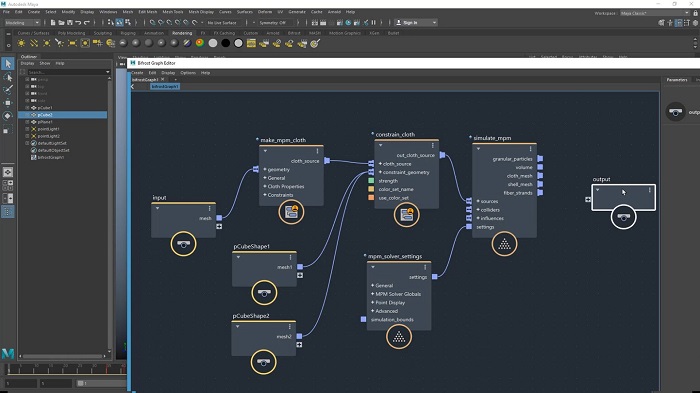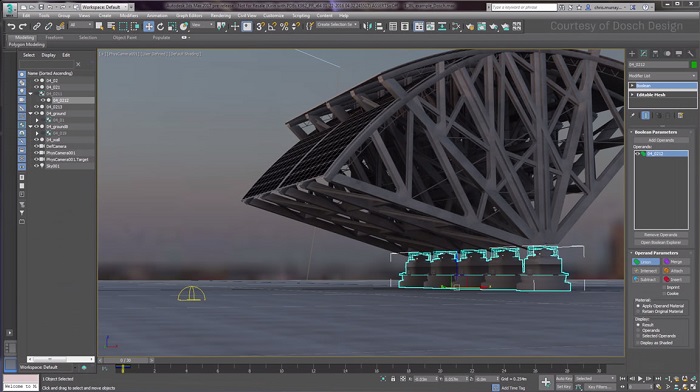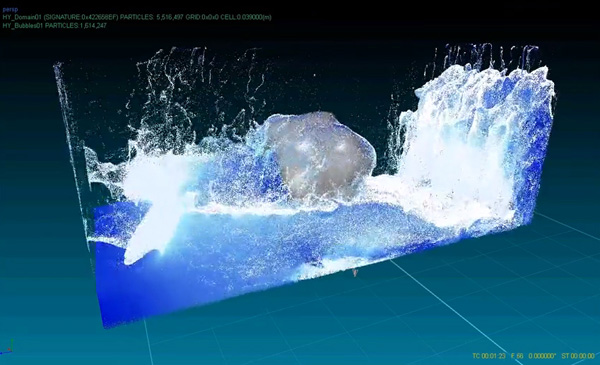Courtesy of the technological leaps in the sector of computer graphics and processing power, creating artistic imagery has become easier than ever before. With myriad applications across 3D presentations, or modelling creation or games, VFX has become a very important niche of the industry. The demand of this domain is fueled by the need of users to experience immersive 3D worlds in games, movies, etc. While major studios that work upon Hollywood projects have their own proprietary software, let us look at some of the software that leading studios make use of.
Foundry’s Nuke
The Nuke Family has a swanky toolkit for node-based compositing, editorial and review, with flexibility and collaborative workflows help you get the quality results – fast. No wonder they are the Oscar-winners too!
In fact many India studios like Fluidmask and redchillies.vfx have spoken about how they deployed the software to create groundbreaking images.

NUKE is a node-based digital compositing and visual effects application first developed by Digital Domain, and used for television and film post-production. NUKE is available for Microsoft Windows 7, OS X 10.9, Red Hat Enterprise Linux 5, and newer versions of these operating systems. The Foundry has further developed the software since Nuke was sold in 2007.
Autodesk Maya

Maya from Autodesk enables to create 3D animations, simulations and rendering software. This tool can be employed to create characters from the beginning. One of the most useful features of Maya is the fact that it has an integrated programming language called MEL. By using this feature you can create custom scripts or search and find already created scripts to use in your own projects.
For decades, Autodesk’s Media & Entertainment tools for artists have played a vital role in the creation of Academy Award-nominated films in the visual effects and animation categories. From galactic space adventures to photoreal locations and epic journeys to the Himalayas, Autodesk 3ds Max, Arnold, Flame, Lustre, Maya and Shotgun have helped teams around the world collaborate and create standout visuals for this year’s top VFX and animated films nominated for Oscars, BAFTAs, Golden Globes, Annies and VES Awards.
Autodesk 3DS Max

3DS Max from Autodesk is another tool that can be used to apply various visual effects to your project. Compared to Maya, 3DS Max is better at creating complex 3D models. One of the greatest pluses is the fact that its user interface is easier to understand, even for beginners.
The most notable difference is the fact that 3DS Max has a wider range of modeling tools is that it has rendering potential too. This feature allows you to create, apply and modify your project at any level, no matter the complexity of the model. 3DS Max is also used for architectural visualization because of its integration with CAD software. Because of this, DIYers and professional woodworkers also use 3DS Max as their chosen software for woodworking designs. If you’re into woodworking, you can also find other software options on this page.
Blender 2.79b

Blender is a great tool to use for working up visual effects on complex projects and the best part is it is completely free to use. With Blender, you can create 3D pipeline-models, animations, simulations, rendering, etc. This program supports NURBS surfaces and polygon meshes making it a strong contender for 3DS Max. Even though this powerful software can help you create professional looking 3D projects with animations, it requires you to have some experience in using it.
Blender was at least partially used for The Man in the High Castle. Sean Kennedy who worked on Hunger Games, Xmen, Life of Pi also admitted to making use of this software to depict the imagery.
RealFlow 10.1

RealFlow is mainly a fluid simulation software. This software is a direct competitor to Houdini and also has an impressive range of features. One of the most important features of RealFlow is the ability to edit relationships between nodes and the ability to simulate graphs with the data provided. You can easily create emitters, containers, ocean surfaces and also solid bodies for your project with just a few clicks. Regarding liquids rendering, RealFlow can create both particle-based liquids and also hybrid-based liquids that are suitable for bigger scenes. The Dyverso technology that powers RealFlow is GPU accelerated and can process secondary elements like splashes, foam, mist, bubbles, etc. in real time.
VFX/CG Supervisor Timothy Hanson at Zoic Studios had also spoken about how they used RealFlow to deploy some amazing simulations for Avengers: Age of Ultron.
Houdini 17 – SideFX

Last but not the least, Houdini is another potent tool that allows you to create and apply visual effects with ease. This software is a node-based software. More nodes can form a network and this feature allows you easily apply changes either to specific nodes or networks. Houdini was created to be an easy to use software that packs a wide range of features in a user-friendly user interface. Its node powered infrastructure gives you the opportunity to branch off from your initial design with customized effects and actions.
One of the best features of Houdini is the ability to create sophisticated particle and dynamic simulations – realistic fire and smoke with Pyro FX, water effects that react to surface tension, viscosity, and also dynamic particles for creating dust and debris. Houdini has been used in various feature animation productions, including Disney’s feature films Fantasia 2000, Frozen and Zootopia; the Blue Sky Studios film Rio, and DNA Productions’ Ant Bully.

